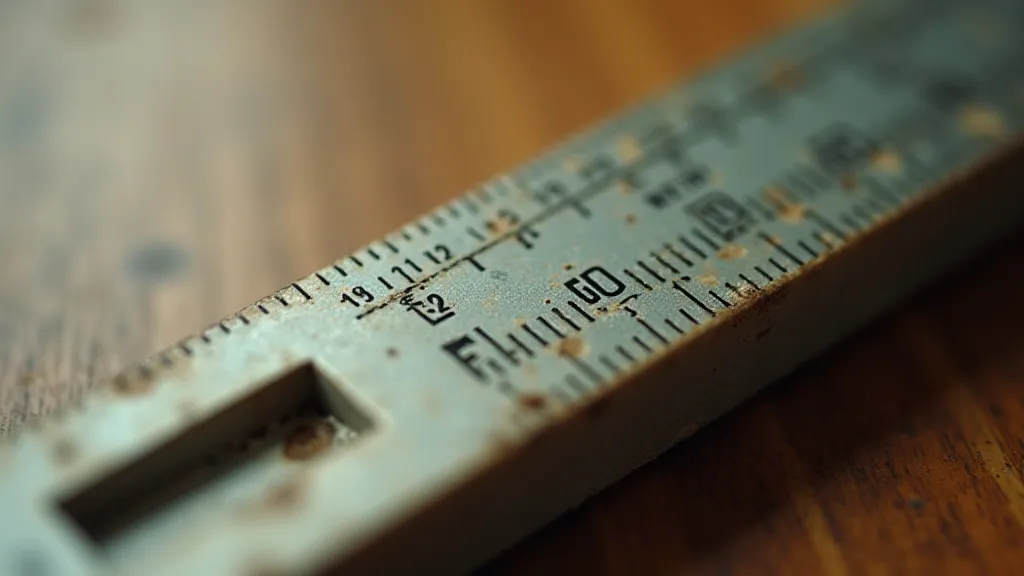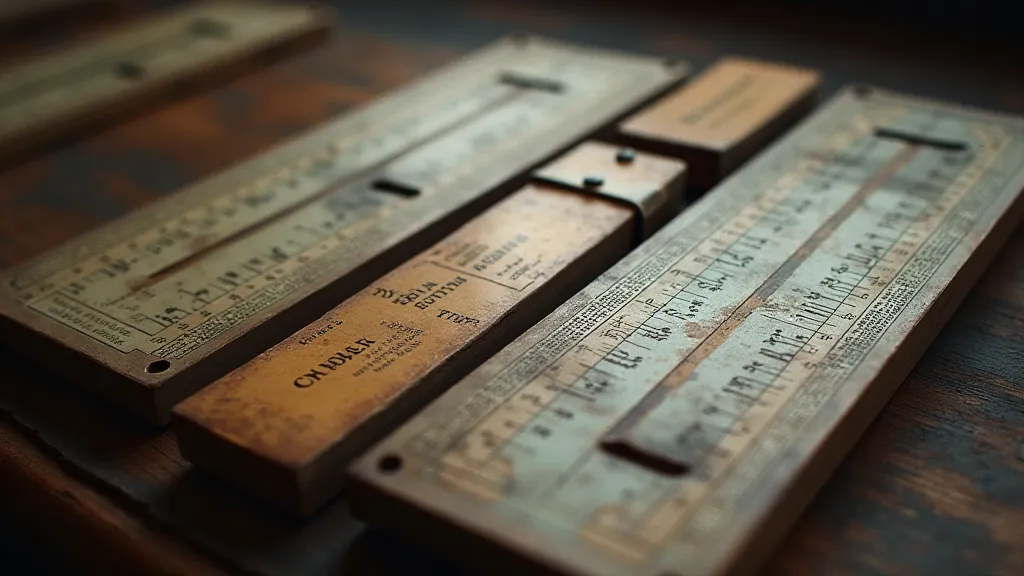The Architect's Secret: Understanding the Geometry Embedded Within Slide Rule Design
There’s a quiet dignity to a slide rule. It’s not the flashy allure of a modern gadget, but something deeper – a sense of considered design, a connection to a lineage of innovation. As a collector, I’ve found myself not just admiring these instruments, but drawn into the mathematical elegance that dictates their very form. They whisper of a time when ingenuity was paramount, and the beauty of a solution lay not just in its accuracy, but in its concise and tangible representation. They remind us that elegance isn’t about complexity; it's about achieving maximum impact with minimal means – a lesson applicable to architecture, engineering, and life itself.
My first slide rule was a Pickett Model N – a gift from my grandfather, an engineer who used it throughout his career. He’s gone now, but the feel of that smooth Bakelite, the satisfying click of the cursor, and the smell of aged oil still evoke vivid memories. He didn’t explicitly teach me how to use it, instead, he’s let me explore it, hinting at its capabilities, patiently answering my (often naive) questions. It wasn’t about just crunching numbers; it was about understanding *how* those numbers were manipulated, about grasping the geometry underlying the process. It was an introduction to the power of spatial reasoning, a concept far more profound than just multiplication and division.
The Foundation: Logarithmic Scales
At the heart of a slide rule's functionality lies the logarithmic scale. This isn's a random arrangement of numbers; it's a deliberate geometric mapping. Imagine a number line that spirals into itself. Instead of representing numbers in their usual linear fashion, logarithmic scales represent them in proportion to their logarithms. The distance from 1 to 10 is the same as the distance from 10 to 100 – both represent a tenfold increase. This ingenious compression allows multiplication and division to be performed simply by aligning scales and reading the result. The ‘C’ scale, arguably the most common, is a direct representation of log base 10. When two numbers are multiplied, their logarithms are added. The slide rule visually performs this addition by physically aligning the numbers and showing their product.

Beyond the Basics: The Dance of Scales
The beauty isn’t just in the logarithmic principle itself; it's in how it’s translated into the intricate arrangement of scales. The standard slide rule typically features the C and D scales (the 'C' scale is a logarithmic scale, and the 'D' scale is its reciprocal, used for division). There are also A and B scales (non-logarithmic, used for squares and square roots) and K scales (for cubes and cube roots). The careful placement and relationship of these scales are not arbitrary. Each scale serves a specific purpose, and the designer had to consider the user’s workflow and optimize for efficiency. The angles at which the scales are inscribed, the spacing between the markings – all contribute to the overall usability of the instrument.
Consider the 'A' and 'B' scales. These are simple linear scales with markings at intervals representing powers of 2. Their inclusion reflects a crucial understanding: powers of two are ubiquitous in engineering calculations and provide an elegant shortcut for squaring and square root operations. The inclusion of these scales highlights how slide rule designers weren't just solving mathematical problems; they were anticipating the problems engineers would face and providing a pre-packaged solution.
The Craftsmanship: A Testament to Precision
Holding a vintage slide rule is an experience in craftsmanship. The materials—often Bakelite, a durable phenolic resin—feel substantial and enduring. The precision of the markings, the smoothness of the cursor, the secure fit of the moving parts—all speak to a level of quality that’s rarely seen in today’s mass-produced goods. These weren't disposable tools; they were designed to last a lifetime, and many have done just that. The makers took pride in their work, understanding that their instruments were essential to the success of engineers and scientists.
The printing of the scales themselves was a particularly delicate process, often involving precision engraving or photolithography. Minor imperfections in the printing – a slight blur, a tiny misalignment – are often characteristic of vintage slide rules and contribute to their unique charm. These imperfections aren’t flaws; they’s marks of authenticity, telling a story of a time when every object bore the imprint of human hands.

Collecting and Preservation: Honoring a Legacy
Collecting slide rules isn't just about accumulating objects; it's about preserving a vital piece of engineering history. Each slide rule represents a specific era, a particular manufacturer, and a particular set of design choices. Understanding the history of slide rule manufacturers – Pickett, Polytron, Faber, Regress – adds another layer of appreciation. Pickett, known for its robust construction and accurate scales, is arguably the most sought-after brand. Others, like Faber, had distinctive European designs.
Restoration can be a rewarding aspect of slide rule collecting. Cleaning the instrument, lubricating the moving parts, and replacing missing cursor knobs can bring a neglected slide rule back to life. However, it's important to approach restoration with respect for the object’s age and character. The goal isn’t to make the slide rule look brand new; it’s to stabilize its condition and preserve its historical integrity. Overly aggressive cleaning or refinishing can diminish its value and authenticity.

The Enduring Appeal
The slide rule may be a relic of the pre-digital age, but its appeal endures. It’s a tangible reminder of a time when ingenuity and craftsmanship were paramount, and when problem-solving demanded a deep understanding of the underlying principles. It offers a unique and satisfying connection to the world of engineering – a connection that extends far beyond the mere crunching of numbers. It’s an invitation to appreciate the geometry embedded within its design, to marvel at the precision of its construction, and to connect with a lineage of innovation. And for those of us who collect them, they're more than just tools; they're echoes of a bygone era, whispering the secrets of the architect's enduring fascination with form, function, and the beauty of simple elegance.





